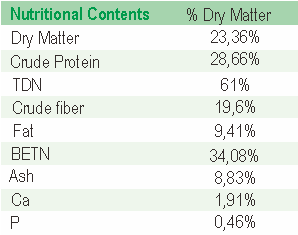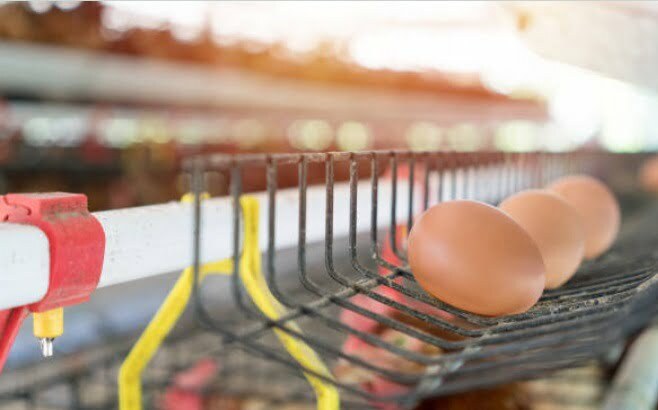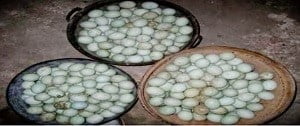Cassava leaves as goat feed
The feed which given to goats, either in the form of leaves or grass called as forage. This forage is used as the main feed in raising goats.
Any type of forage can be used for goat feed, as long as it is non-toxic and harmless to goats.
Examples of forages are elephant grass, elephant grass schum, turi leaf (Sesbania grandiflora), calliandra leaves, jackfruit leaves, banana leaves, cassava leaves, alfafa leaves, and many other leaves.
Ideally, feed for goats should be diverse so that goat farms get complete nutrition.
One of forage as goat feed is cassava leaf. Cassava leaves have a fairly high crude protein content of about 16%.
Protein content is high enough to allow the leaves of cassava as a good animal feed. But for some areas of cassava leaves have not been fully utilized.
However, cassava leaves have antinutrition that its use as goat feed is limited.
Anti-nutrients contained in cassava leaves is cyanide acid. Anti-nutrients can cause goats to poisoning until death.
Must be careful in giving feed cassava leaves as goat feed. There have been many cases of goat farm animals poisoned by eating cassava leaves.
This is because cassava leaves contain cyanide acid that is poisonous to goat farm animals.
Therefore, before given to goats, cassava leaves should be treated against the cassava leaves.
The goal is to reduce or eliminate the anti-nutrients contained in the leaves of cassava.
Simple treatment for cassava leaves before use

Here are the ways that safe cassava leaves are given to goats:
– Cassava leaves should be shriveled under the sun or dried in the sun to dry.
– Do not give freshly dried cassava leaves to goats. This is because he is still hot, you should wait until the temperature is really cold.
– Cassava leaves are fertile, leaves wide and green is usually dangerous for goats.
– Do not give freshly fertilized cassava leaves (urea, za, etc.) to goats, it is dangerous.
– Cassava plants that are old, leaves are usually safe for goats.
– Cassava leaves are yellow or yellowish green color, safe for livestock
Nutritional Content of Cassava leaves
From research conducted by Askar, Surayah, Bogor research center in his journal said that the nutritional content contained in the leaves of cassava are:
In addition, a study of the use of cassava leaves as goat feed is reported as follows:
The ration consists of elephant grass and cassava leaves that have been shriveled for 24 hours at a ratio of 1: 2.
Giving cassava leaves 1000 grams / day or 1 kg / day gives the effect of adding goat weight 21.4 grams / head / day.
While giving cassava leaves 1500 grams / day or 1.5 kg / day gives the effect of adding goats weight 23.2 grams / head / day.
The sheep feed ration consisting of elephant grass and cassava leaves that has been shriveled for 24 hours gives the highest body weight gain of 67 grams / head / day.
The number of cassava leaves contained in the ration of 2 kg and the ratio between elephant grass and cassava leaf is 1.7: 2.0.
Cassava leaves used as the main feed of goats are also reported to have no negative effect on the performance of livestock.
We ourselves use dried cassava leaves for our use as our animal feed. About 80% of our feed comes from cassava plants. Whether it’s leaves, stems, tuber skin and the dregs.
 JOYNIM FARM Goat Farming, Cattle Farm, Laying Hens, Quail Farm, Gardening
JOYNIM FARM Goat Farming, Cattle Farm, Laying Hens, Quail Farm, Gardening




